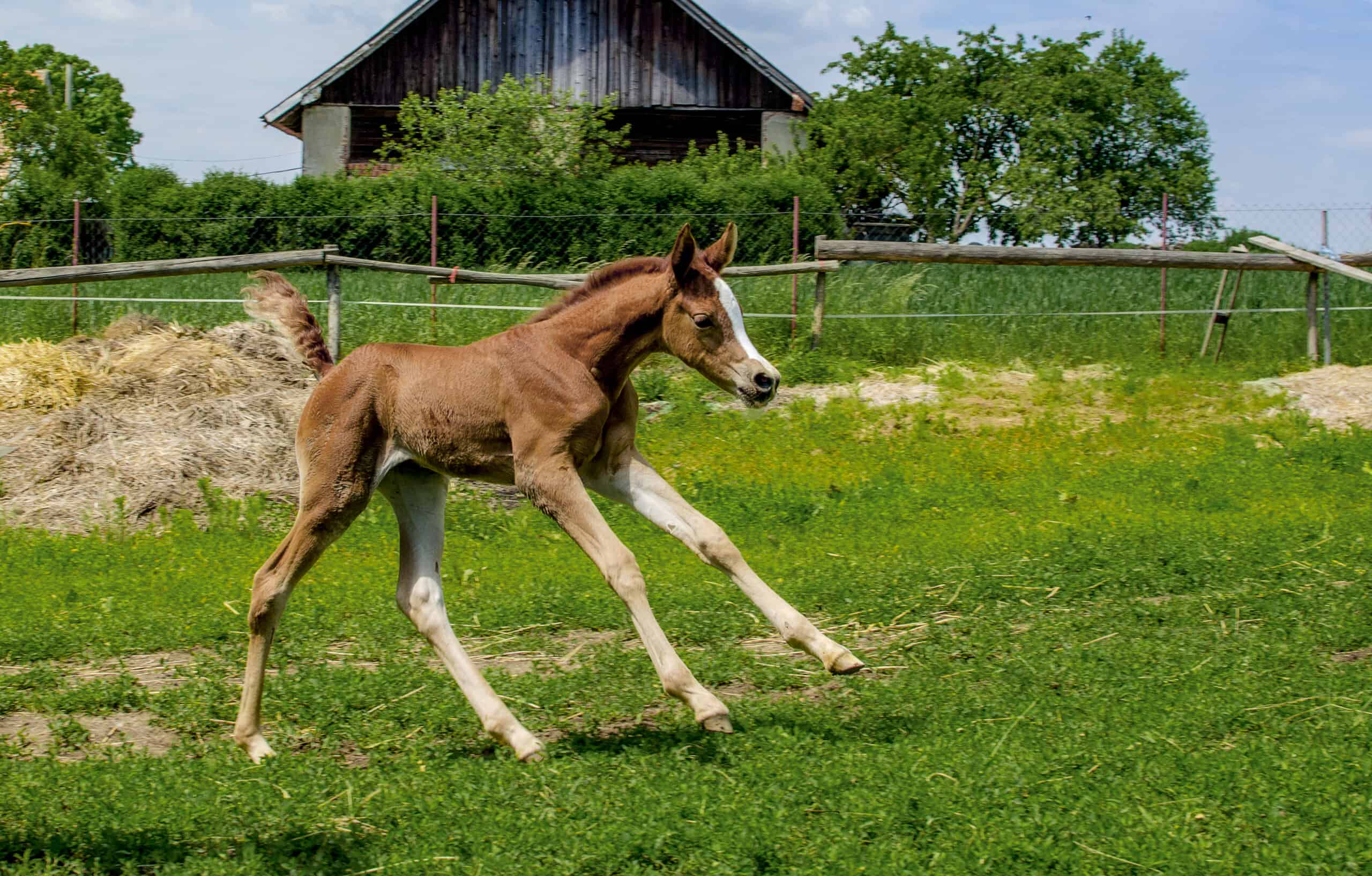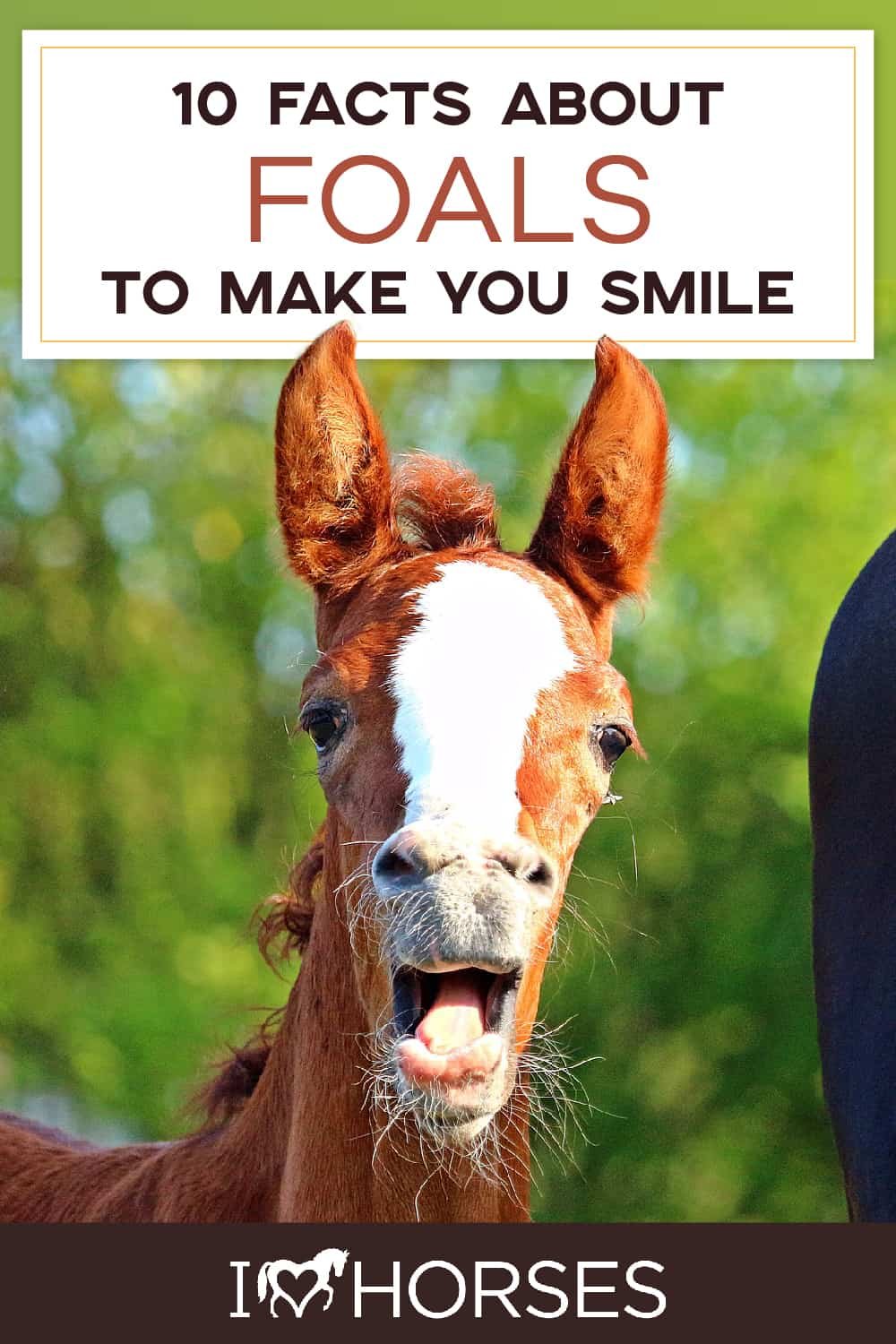Foals can walk and run within a few hours after birth and horses have lightning-fast reflexes. Foals, which are baby horses under the age of one, are fascinating creatures that possess incredible abilities and unique characteristics.
We will explore 10 interesting facts about foals, including their quick development, strong maternal bonds, and remarkable physical capabilities. Additionally, we will delve into their instinctual behaviors, such as staying close to their mothers and learning essential survival skills. Whether you’re a horse enthusiast or simply curious about these majestic creatures, this comprehensive guide will provide you with valuable insights into the world of foals.
So, let’s dive in and discover the fascinating world of these adorable baby horses.

Credit: ihearthorses.com
Facts About Foals
Foals, the adorable baby horses, are not only cute but also fascinating creatures in their own right. From their breathing and sleeping habits to their physical abilities and development, let’s explore some interesting facts about foals.
Breathing And Sleeping Habits
Foals have a unique breathing mechanism as they are obligate nasal breathers. This means that they can only breathe through their nose and not their mouth. It’s an interesting adaptation that ensures their airways remain clear, even when they are nursing or eating.
When it comes to sleeping, foals have an interesting habit of sleeping while standing up. This behavior is inherited from their wild ancestors, as it allows them to escape danger more quickly. Foals are equipped with a “stay apparatus” that locks their legs in place, allowing them to rest without collapsing.
Physical Abilities
Foals are incredibly agile and have lightning-fast reflexes. They can walk and run within a few hours after birth, showcasing their remarkable physical abilities. This early mobility is crucial for their survival in the wild, where they need to keep up with their herd and evade predators.
In addition to their quick movements, foals also display impressive hearing skills. They have highly sensitive ears that can pick up even the faintest of sounds. This acute sense of hearing helps them stay alert to potential threats and communicate with their herd members.
Development And Terminology
A foal is the term used to describe a baby horse in its first year of life. More specifically, a male foal is called a colt, while a female foal is called a filly. These terms are used until the horse is three or four years old.
During their early development, foals have certain physical features that are worth noting. They are born with bowed legs, which gradually straighten out as they grow older. This leg conformation is a natural adaptation that allows them to absorb the impact of running and jumping.
It’s interesting to note that foals are often born during the darkness of night. This nocturnal birthing behavior is again ingrained in their wild instincts, as it provides them with some degree of camouflage and reduced visibility for predators.
In conclusion, foals are not only adorable but also fascinating creatures with unique habits and abilities. Their breathing mechanism, sleeping habits, physical agility, and early development make them truly remarkable to observe and appreciate.
Foal Behavior And Communication
One fascinating aspect of foal behavior is their silent communication. Foals may not have developed vocalizations as strongly as their adult counterparts, but they have other ways of effectively communicating their needs, desires, and emotions. Through subtle body language and movements, foals can convey important messages to their mothers and other herd members. This silent communication is crucial for the survival and well-being of the foal.
Foals exhibit a strong sense of protective behavior towards their mothers. This instinct is vital for their safety and survival in the wild. From the moment of birth, foals prioritize staying close to their mothers and keeping a watchful eye on potential threats. They quickly learn to recognize their mother’s unique scent and follow her closely, relying on her guidance and protection. Foals may also display protective behavior by standing guard and alerting their mothers to potential dangers in the environment.
The bond between a foal and its mother is incredibly strong. It is the foundation of social interaction and emotional development for the foal. Foals rely on their mothers for nourishment, protection, and learning essential life skills. They form a deep attachment to their mothers, seeking comfort, security, and guidance from them. This bond not only helps the foal navigate the world but also contributes to the overall well-being and mental development of the foal.
Caring For Foals
When it comes to caring for foals, there are several important factors to consider. From feeding and nutrition to health and immune system, understanding the needs of foals is crucial for their proper growth and development. Let’s take a closer look at these aspects of caring for foals:
Feeding And Nutrition
Feeding and nutrition play a vital role in the healthy development of foals. Within a few hours after birth, foals can already walk and run. However, it’s important to ensure they receive proper nourishment to support their growth. Foals rely on their mother’s milk, which provides essential nutrients and acts as an immune booster. 3 sentences
Health And Immune System
The immune system of a foal is not fully developed at birth. Therefore, it’s crucial to pay extra attention to their health and immune system. Foals may have bowed legs, which is normal and usually corrects itself within a few weeks. Additionally, they are born with certain instincts, including silent communication with their mother, to ensure their safety. Providing a clean and safe environment is necessary to prevent diseases and ensure their overall well-being. 3 sentences
Growing And Development
Foals go through significant growth and development during their first year of life. It is during this period that they transition from being a foal to a more mature horse. They reach different milestones at various stages, including shedding their baby coat, developing adult teeth, and learning to socialize with other horses. Providing proper nutrition, regular exercise, and appropriate veterinary care are essential to support their healthy growth and development. 3 sentences
:strip_icc()/low-angle-view-of-horse-grazing-on-grassy-field-692953525-58840c1f5f9b58bdb30ccdd5.jpg)
Credit: www.thesprucepets.com

Credit: cowgirlmagazine.com
Frequently Asked Questions On 10 Facts About Foals
What Are Some Facts About Foals?
Foals can walk and run within hours after birth. They have lightning-fast reflexes and excellent hearing. Horses are highly intelligent animals. A foal is an equine up to one year old. It can be a colt (male) or filly (female).
They are called “sucklings” when nursing.
What Are 10 Facts About Horses?
Horses can’t breathe through their mouth. They can sleep standing up. Horses have excellent hearing. They have lightning-fast reflexes. Foals can walk and run within hours of being born. Horses are highly intelligent animals.
How Fast Does A Foal Grow?
Foals grow fast, being able to walk and run within hours after birth. A foal is an equine up to one year old, and can be called a colt or filly until they are three or four years old.
How Long Is A Foal Called A Foal?
A foal is an equine up to one year old, and can be called a colt for a male foal and filly for a female foal. This term is used mainly for horses, but can also be used for donkeys.
Once the horse is three or four years old, the terms colt and filly are no longer used. A foal may also be called a “suckling” when nursing from its dam (mother).
Conclusion
Foals are truly fascinating creatures that captivate us with their unique characteristics. From their ability to walk and run within hours of birth, to their lightning-fast reflexes and excellent hearing, foals exhibit remarkable traits. As they grow, their size and height will vary, with specific terms like colt and filly used to refer to male and female foals.
It’s also interesting to note that foals protect their mothers during the birthing process. These facts remind us of the incredible nature of foals and the joy they bring to our lives.

